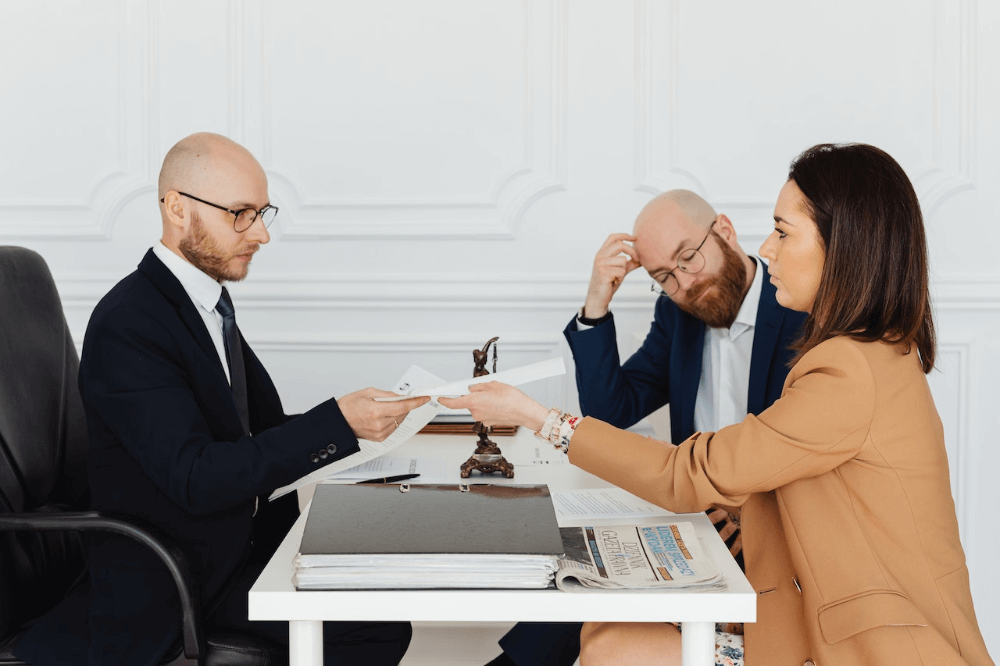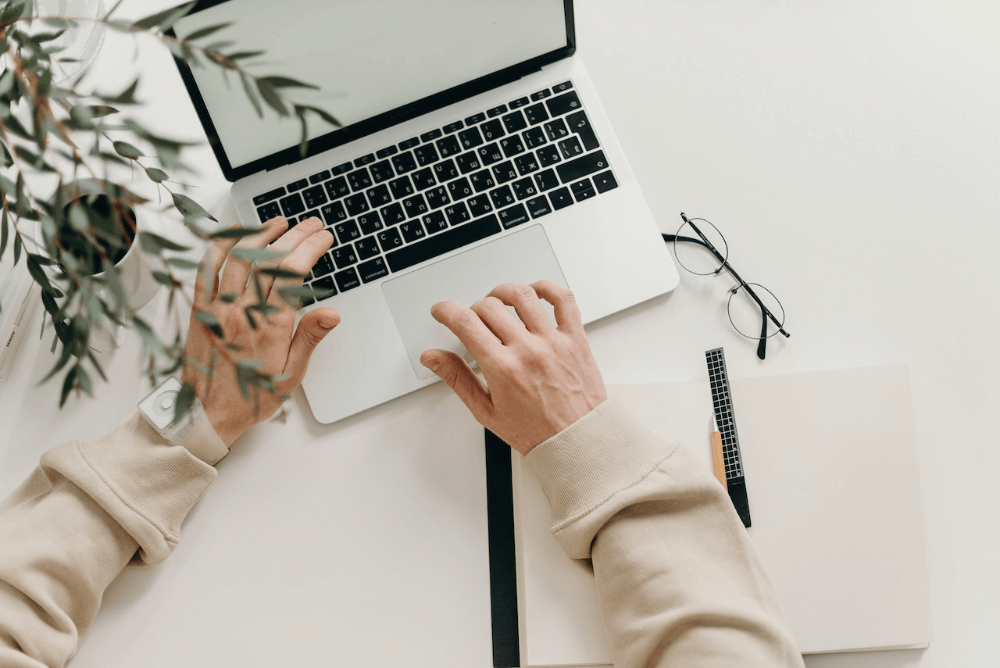📑Table of Contents:
- Understanding Business Casual
- Key Elements of Business Casual for Men
- What Business Casual is ‘NOT’
- Tips to Master Business Casual for Men
- Venturing Beyond the Basics
- Seasonal Considerations in Business Casual
- Exploring Varied Styles
- The Role of Accessories
- FAQs- Frequently Asked Questions
- Is All Black Business Casual?
- What is business casual for men?
- Can jeans be considered business casual for men?
- Are sneakers acceptable in a business casual setting?
- Why aren’t shorts typically considered business casual?
- What is the difference between smart casual and business casual for men?
- How should I accessorize my business casual outfit?
- Is an all-black ensemble considered business casual?
- How often should I update my business casual wardrobe?
- Are polo shirts considered business casual?
- What Shoes Are Considered Business Casual?
- Is a tie necessary for a business casual look?
- Can t-shirts be a part of business casual attire?
- What’s the role of socks in business casual?
- Final Words!
- FAQs- Frequently Asked Questions
Last updated on October 27th, 2023 at 10:07 am
In today’s fast-paced corporate world, the way one presents oneself can play a vital role in creating a lasting impression. And while the days of strictly wearing suits to work might be waning for some industries, a new term has entered the corporate lexicon that many find a bit puzzling: business casual.
Specifically, when it comes to business casual for men, there is often a cloud of confusion. What does it encompass? Is there a specific set of guidelines one should follow?
If these questions resonate with you, you’re in the right place. This article will decode the enigma that is “men’s business casual.”
Dive into the nitty-gritty details, and let’s decode this dress code together…

Understanding Business Casual
Before we dive into specifics, it’s essential to grasp the overarching concept behind business casual for men. At its core, business casual is a dress code that bridges the gap between formal business wear, like suits and ties, and more relaxed attire.
It aims to create a professional appearance that’s comfortable and versatile while still ensuring that the individual looks polished and appropriate for a workplace setting.
Key Elements of Business Casual for Men
- Shirts: Business casual shirts usually mean collared options, like button-downs or polo shirts. While a tie is generally not necessary, the shirt should be tucked in for a cleaner appearance. Stick to neutral colors or subtle patterns.
- Pants: Slacks or chinos are your best bet. They should be well-fitted, free from wrinkles, and not too tight. Colors like navy, black, gray, or khaki are staples in the business casual wardrobe.
- Shoes: Loafers, oxfords, and other dress shoes are appropriate. It’s essential to avoid athletic shoes or very casual footwear like flip-flops or sandals. Your shoes should be clean and in good condition.
- Blazers or Jackets: While not always necessary, a well-fitted blazer can elevate the business casual look. Opt for solid colors or subtle patterns.
- Accessories: A leather belt, a conservative watch, and possibly a briefcase or professional-looking bag complete the ensemble. Remember, less is more – avoid over-accessorizing.
What Business Casual is ‘NOT’
Understanding what isn’t included in “business casual for men” is just as important. Here’s a list to help you avoid common pitfalls:
- Jeans (unless specified by the company and typically if they are dark-washed without rips)
- T-shirts or casual tank tops
- Sneakers or very casual footwear
- Shorts
- Casual hats, like baseball caps
Tips to Master Business Casual for Men
- Adapt to Your Environment: Pay attention to the workplace culture. In some settings, a polo shirt might be perfectly appropriate, while in others, a button-down and blazer are the norms.
- Prioritize Fit: A well-fitted shirt or pair of pants can make a significant difference in your appearance. Invest in tailoring if necessary.
- Maintain Your Clothes: Regularly clean, iron, and mend your clothing. Wrinkled or stained attire can quickly make a business casual outfit look sloppy.
- Stay Updated: Fashion evolves, and so does the definition of business casual. Stay updated with the latest trends and adjust your wardrobe accordingly.
- When in Doubt, Overdress: It’s always better to be slightly overdressed than underdressed. If unsure about the dress code for an event or meeting, it’s safer to lean towards the more formal side of business casual.

Chinos: Wondering how to wear chinos in business casual style? Easy. Team them with a fitted polo or a tucked-in shirt. Finish off with loafers or clean sneakers. As for colors, you can never go wrong with beige, navy, or grey.
Accessories and Final Touches: Looking to accessorize? Consider business casual men’s jewelry like a classic watch or cufflinks. A sharp business casual male jacket can elevate your look, especially in cooler climates. And for our Asian readers, the business casual Asian male attire doesn’t deviate too much – it’s all about that global universal style.
More on Summer and Outfit Choices: When the sun blazes, business casual men’s summer outfits require a little tweak. Lightweight materials like cotton or linen are your best friends. A light-colored polo, paired with tailored shorts in some modern workspaces, can be a win. However, always gauge the office culture before taking the plunge.
Footwear: Business casual men’s shoes shouldn’t be an afterthought. As mentioned earlier, clean loafers or derbies are a safe bet. But did you know brogues can also be a solid choice? Their detailed perforations add a touch of sophistication. While we’re on the topic of shoes, don’t shy away from business casual men’s dress shoes – they can be the perfect bridge between formal and relaxed.
All About Tops: From polos to button-ups, business casual men’s shirts offer a broad spectrum. But, always prioritize fit. A too-tight shirt or an overly baggy one can ruin the ensemble. The key? Find the middle ground. And if you’re on the hunt for premium options, there are numerous brands offering quality men’s business casual shirts that combine style with comfort.
Jackets, Polos, and More: A business casual male jacket, be it a blazer or a light cardigan, can be the cherry on top of your outfit. If it’s a tad chilly outside or you’re headed for an important meeting, throw on that blazer. As for polos, they’re the epitome of relaxed elegance. Just ensure it’s not wrinkled and you’re golden.
Venturing Beyond the Basics
Embracing Cultural Nuances: While the essence of business casual remains constant globally, there are regional variations. For instance, business casual Asian male attire might incorporate traditional elements, merging classic Western styles with local flavors. It’s a beautiful blend of tradition and modernity.
Jeans: To Wear or Not to Wear?: The age-old debate: Are jeans business casual for a man? While traditionally not part of the business casual ensemble, times are changing. Dark-washed, well-fitted jeans without any rips can pass in certain work environments. However, pair them with a polished shirt and possibly a blazer to maintain that business edge.
Crafting Perfect Ensembles: Looking for business casual men’s ideas? It’s about mixing and matching. Rotate between chinos, slacks, and the occasional jeans. Top it with polos, button-downs, or even simple turtlenecks. For those looking for inspiration, business casual men examples are abundant online – from Pinterest boards to fashion blogs.
Dressing for Special Occasions: If you’ve got an interview or an important meeting, understanding the business casual men’s dress code is paramount. You can’t go wrong with a light-colored shirt, navy or grey trousers, and a complementary blazer. Accessorize minimally: a watch, possibly a tie, and you’re set. Remember, first impressions matter, so make it count!
When it Comes to Accessories: Less is more in the world of business casual. However, a piece of statement business casual men’s jewelry, like a leather-strapped watch or a silver tie clip, can elevate your look. Scarves in winter, pocket squares with blazers, or even cufflinks can add a touch of finesse. But balance is the key.
The Evolution of Business Casual: From the 80s till now, business casual has seen a shift. With workplaces becoming more relaxed, the lines between formal and casual continue to blur. While we’ve provided a roadmap, always be receptive to your work environment and adapt accordingly.

Seasonal Considerations in Business Casual
Winter Wonders: As the temperature drops, layering becomes crucial. Opt for woolen trousers, and don’t be afraid to don a turtleneck under a blazer. It’s a chic look that also keeps you warm. Knit cardigans and pullovers can be stylish alternatives. Business casual male jacket choices expand, too. Consider a well-fitted overcoat or even a trench to combat the chill stylishly.
Sizzling Summer Style: Breathability is your best ally in summer. Linen shirts, cotton trousers, and lighter colors dominate the summer palette. While we discussed shorts earlier (and their controversial nature), if your workplace allows, go for tailored ones. Pair them with loafers and a crisp shirt for a balanced look.
Sprightly Spring & Awesome Autumn: Spring and autumn allow for a bit of a mix. The mild temperatures mean you can play around with light layers. A soft cardigan, light jacket, or even vest can be thrown into the mix. Chinos in earthy tones or pastels can be the highlight of your outfit during these seasons.
Exploring Varied Styles
Smart Casual Examples Male Edition: While we’ve touched upon business casual, diving into smart casual examples can give a broader perspective. Think denim paired with a blazer, or even sneakers with slacks. The world of smart casual gives a bit more room for experimentation.
Business Casual Men’s Attire through the Ages: Fashion evolves, and so does workplace attire. While today we see a blend of comfort and style, there was a time when suits were the daily norm. The beauty lies in the evolution and adaptability of fashion. Tomorrow’s business casual might look different, and that’s the excitement of it all.
Color Coordination: While we’ve spoken about all-black ensembles, understanding color coordination can elevate your business casual game. Earth tones, pastels, and classic colors like navy, black, and grey are failsafe. But occasionally, introducing a pop of color – maybe a bright tie or a vibrant shirt – can break the monotony.
The Role of Accessories
Less is Often More: While clothes make the first impression, accessories often leave a lasting one. However, the trick lies in subtlety. A classic leather belt, a sophisticated watch, or even a minimalistic tie bar can elevate your outfit without making it look overdone.
Timeless Watches: In the age of smart devices, a classic watch stands as a testament to timelessness (pun intended). Whether it’s a leather strap for casual days or a metallic one for meetings, the right watch complements business casual perfectly.
Bags and Briefcases: Gone are the days when a rugged backpack was the go-to. Today, a leather messenger bag or a sleek briefcase not only serves functionality but also adds to your style quotient.

FAQs- Frequently Asked Questions
Is All Black Business Casual?
Absolutely. An all-black ensemble can be both sleek and business casual. However, play with textures and materials to avoid looking monotonous. Pair a black cotton shirt with black wool trousers, for example.
What is business casual for men?
Business casual is a dress code that strikes a balance between formal business wear and relaxed casual attire. For men, this typically involves wearing well-fitted trousers or chinos, paired with a collared shirt and often complemented with a blazer or a sweater.
Can jeans be considered business casual for men?
Traditionally, jeans weren’t part of the business casual ensemble. However, with evolving workplace norms, dark-washed, non-ripped jeans can be appropriate in more relaxed settings. Always ensure they’re paired with a more formal element, like a crisp shirt or a blazer.
Are sneakers acceptable in a business casual setting?
It largely depends on the workplace. In creative fields or more relaxed environments, clean and stylish sneakers might be accepted. However, in traditional settings, it’s safer to stick to loafers, derbies, or brogues.
Why aren’t shorts typically considered business casual?
Shorts are often viewed as too casual for many office settings. They break the professional silhouette that trousers or chinos establish. However, in some modern workplaces, especially in warmer climates, tailored shorts might be acceptable.
What is the difference between smart casual and business casual for men?
While both are relaxed compared to formal wear, smart casual offers more flexibility. You might find denim, t-shirts, and even stylish sneakers more acceptable in smart casual, whereas business casual usually requires a more polished look with collared shirts, trousers, and dressier shoes.
How should I accessorize my business casual outfit?
Stick to classic accessories: watches, belts, and possibly tie bars or cufflinks. Avoid over-accessorizing. Remember, simplicity often results in a more refined look.
Is an all-black ensemble considered business casual?
Yes, an all-black outfit can be both stylish and business casual. Just ensure there’s a variety in texture to avoid monotony, like pairing a black cotton shirt with black wool trousers.
How often should I update my business casual wardrobe?
While staples like trousers and blazers have a longer shelf-life, it’s good to update shirts, ties, and other accessories every season or so. It ensures you stay current and stylish.
Are polo shirts considered business casual?
Absolutely! A well-fitted polo shirt, especially in a solid color or subtle pattern, can be a great addition to a business casual wardrobe, especially during warmer months.
What Shoes Are Considered Business Casual?
Footwear can make or break an outfit. For the business casual realm, lean towards loafers, derby shoes, or clean minimalist sneakers. Remember, quality over flashiness wins the day.
And hey, looking for some tech updates for your business? Check out how to open an online bank account for small businesses. It’s a game-changer!
Is a tie necessary for a business casual look?
No, a tie isn’t mandatory for business casual. However, adding a tie can elevate the look, especially if you’re aiming for a slightly more formal appearance.
Can t-shirts be a part of business casual attire?
In general, t-shirts are considered too casual. However, a high-quality, plain, or subtly patterned t-shirt paired with a blazer can work in more relaxed and creative workplaces.
What’s the role of socks in business casual?
Socks can be both functional and a style statement. While neutral-colored socks are safe, fun patterns or colors can add a dash of personality to your outfit. However, it’s best to avoid overly flashy designs.
Before we jump to the end, if you own a small business on the side, consider looking into tips for small business insurance coverage exclusions. Just like the perfect outfit, the right coverage provides peace of mind.
Final Words!
Whether you’re dressing for a business casual men’s interview or a laid-back day at the office, remember to keep it neat and polished. Explore business casual men’s outfits, and find what resonates with your personal style. Need some tech on the go? Don’t forget to check out the best business laptop in 2024.
Lastly, remember, attire is an extension of your personal brand. So, make sure it aligns with the image you wish to project. Happy dressing!





